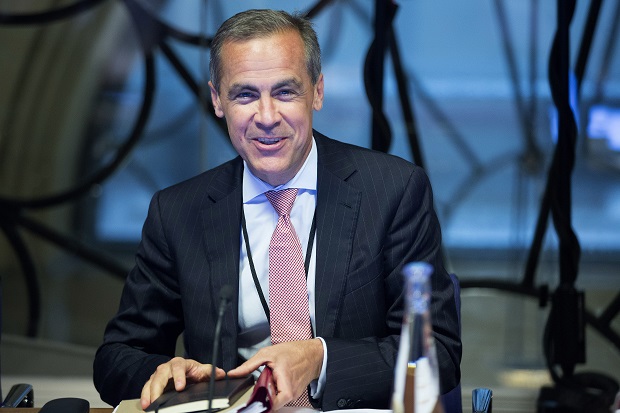Mark Carney made his mark this morning. Moments ago, he opened his inflation report and issued his ‘forward guidance’, which is designed to make the markets aware of his long-term plans for interest rates. This is important because, although there are signs of life in the British economy (and Carney was cautious about them), inflation remains above the Bank of England’s target, the base interest rate remains rooted to the floor and unemployment remains high at around 8 per cent. There is also the question of Britain’s mounting debts, the answer to which will largely depend on how the bond markets react to this and other announcements. And then there is the prospect of further quantitative easing…
So, what happened? Channel 4’s Faisal Islam has some very helpful tweets of the headlines:
Basically interest rates remain at 0.5% until unemployment below 7%, expected 2016/2017… (Unless inflation surges)
— Faisal Islam (@faisalislam) August 7, 2013
Further QE possible if unemployment above 7%. QE not unwound while unemployment above 7%
— Faisal Islam (@faisalislam) August 7, 2013
What can we make of that? The Bank clearly thinks that inflation is not the greatest threat to Britain’s prosperity. Pensioners and those on fixed incomes would probably disagree with Carney’s analysis, but those who are unemployed and those who are underemployed (that is those in part time work who require full time work) might share his view. Either way, the Monetary Policy Committee will think again about interest rates and the rest when unemployment falls to 7 per cent (roughly an additional 750,000 jobs). Everyone seems to agree that this will not happen before the next election, so George Osborne has no need to change course. This weakens Labour’s hand still further. If the recovery really gets going, the party will be in an very tricky spot.
In other news, Carney and his men rejected out of hand the suggestion that the Help to Buy scheme is starting another unsustainable housing boom, which will please Osborne no end. However, it is worth noting that suppliers to construction firms are reporting spikes in demand for materials used in residential housing of about 25 per cent since the scheme was introduced. It’ll be interesting to see how this latest Osborne gamble pans out.






Comments